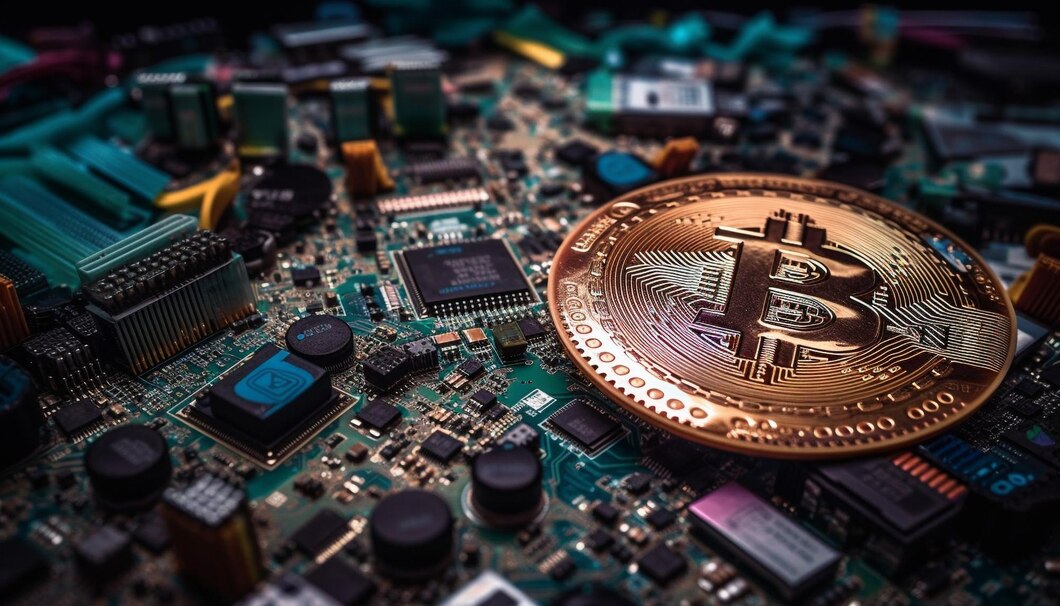Bitcoin And Crypto Demystified: 14 Essential Terms To Understand

toc impalement
Since the rise of Bitcoin, cryptocurrency has taken off massively, and in a short time, the crypto world has become an industry of its own.
Crypto has opened up new ways to make passive income—it is, in fact, a significant source of income for many millionaires.
It has powered many metaverse projects and even crypto games like RollerCoin. Although crypto has become popular today, many people find it hard to understand its technical terms.
This article explains 14 essential crypto terms in the simplest ways.
1. Cryptocurrency
What is crypto? Crypto or cryptocurrency is a digital or virtual currency designed with cryptography to be secure. Its transactions are also hosted on a decentralized network. Cryptocurrencies enable cheaper peer-to-peer transactions by cutting out intermediaries.
2. Blockchain
The blockchain is a decentralized digital ledger where transactions are recorded across a network of interconnected computers. Transactions are grouped with others in a “block” and then added to the “chain” in a linear, chronological order. This design is highly secure and practically impossible to alter.
3. Bitcoin
Bitcoin is a type of cryptocurrency. It is the first and most popular cryptocurrency. It was created in 2009 by Satoshi Nakamoto. Like other cryptocurrencies, Bitcoin is a decentralized digital currency that enables peer-to-peer transactions without a third party. Bitcoin operates on a blockchain network and uses a Proof of Work (PoW) system for validating its transactions.
4. Altcoins
Altcoins simply means any other cryptocurrencies or cryptocurrency coins that are not Bitcoin. They’re called “alternative coins” because they were made to be Bitcoin alternatives. The popular ones include Ethereum, Litecoin, Ripple (XRP), and Cardano. There are thousands of altcoins today, all made to improve upon different Bitcoin features and provide other use cases.
5. Tokens
Tokens are digital assets that can represent different things. They could be anything: a simple ticket to an event to a store of value. Tokens are usually built on top of an existing blockchain, like Ethereum’s ERC-20 standard.
They are made from a process called ‘tokenization.’ Tokenization uses a digital token to represent something in the real world, such as stocks and real estate.
Tokens are not cryptocurrencies; cryptos are generally used across different platforms, while tokens serve a more specific purpose within a particular platform.
6. Wallet
A wallet or crypto wallet is a digital “wallet” where cryptos are stored and managed. Wallets may be in software, hardware, or paper form. A wallet typically contains a user’s public and private keys to send, receive, and track cryptocurrency records. Some wallets are designed for specific cryptocurrencies, while others could support multiple coins and even tokens.
7. Liquidity
Liquidity is how easily you can buy or sell an asset in a market without its price getting significantly affected. It is something traders consider when buying and selling. High liquidity means many buyers and sellers are in the market, which causes tight spreads and lower slippage. Low liquidity, on the other hand, means very few people are involved in the market, which could cause increased price volatility. High liquidity is considered good because it means it’s a healthy market.

8. Mining
Mining in crypto does not involve digging. It is the process of validating transactions and creating new blocks in a Proof of Work (PoW) blockchain network. Miners solve complex mathematical problems to add a new block to the chain and get a ‘block reward,’ which is a newly created cryptocurrency.
9. Proof Of Work (PoW)
Proof of Work is a type of ‘consensus mechanism’ some blockchain networks like Bitcoin use in validating transactions and creating new blocks. It is also the consensus mechanism crypto miners use to add new blocks to the chain. It’s a secure, decentralized system, but it takes a lot of energy to run, especially in mining.
10. Proof Of Stake (PoS)
Proof of Stake (PoS) is the alternative to Proof of Work used by blockchain networks like Ethereum 2.0. It is designed to validate transactions but with lower energy consumption. In PoS, miners and validators create new blocks and validate transactions depending on the amount of cryptocurrency they hold and can “stake” as collateral. They are rewarded with transaction fees or new tokens.
11. Smart Contract
A smart contract is a contract encoded with the terms of the agreement, which makes it self-executing. Smart contracts run on blockchain networks like Ethereum. They are automatically executed when pre-encoded conditions are fulfilled. They make blockchain transactions so transparent and trusted.
12. Scalability
Scalability is the ability of a blockchain network to process a huge number of transactions and users without reducing its performance and security. Ways to improve scalability include layer 2 scaling technologies, sharding, and alternative consensus mechanisms.
13. Decentralized Finance (DeFi)
Decentralized Finance, or DeFi as it’s more commonly known, is an ecosystem of fintech apps and services that run on blockchain technology. DeFi and DeFi apps are developed to create a transparent and open financial system with no intermediaries.
14. Initial Coin Offering (ICO)
An Initial Coin Offering (ICO) is a fundraising system blockchain-based projects use to raise capital. It simply involves selling newly created tokens or cryptocurrencies to investors. ICOs allow startups to bypass traditional venture capital funding methods and get easy access to funding.
Conclusion
Like every industry, crypto has its terms and terminologies many people don’t know. But sometimes, crypto terms get a little too much, even for the experts in the industry. The good thing about these terms is that they are all intertwined. If you know the basic ones, it gets easier to understand the rest. There are still many other crypto words; however, learning these basic ones is a good start.
Read Also:


















1 comment
worldcuppoints February 24, 2024 at 12:15 pm
“Excellent!”